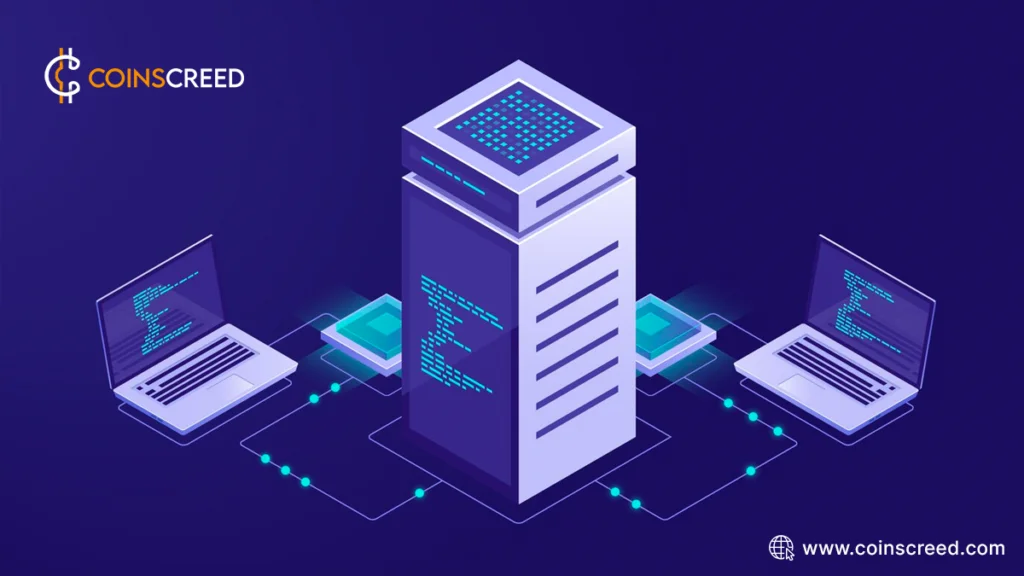This article will delve into the importance of decentralization in Web3 infrastructure and highlight the different layers involved.

Decentralization in web3 infrastructure is a critical factor shaping the future of the Internet. At every layer, from networking to storage, this concept ensures that power is not concentrated in the hands of a few. Instead, it is distributed across a network of participants, empowering individuals and fostering trust. By embracing decentralization, web3 infrastructure offers a more resilient and censorship-resistant ecosystem.
It promotes transparency, security, and immutability, heralding a new era of internet freedom. From blockchain technology to peer-to-peer networks, these innovative solutions enable individuals to regain control over their digital lives, creating a more inclusive and equitable online world.
Introduction to Web3 and Decentralization
Web3 refers to the next generation of the World Wide Web that aims to provide a decentralized, peer-to-peer network. Unlike the traditional Web2, where centralized entities control and manage data, Web3 promotes user sovereignty, privacy, and security through blockchain and decentralized technologies. Decentralization is a crucial principle in Web3, ensuring power is distributed among network participants and eliminating the dependency on central authorities.
What is Web3 infrastructure?
Web3 infrastructure refers to the underlying foundational technologies and protocols that enable the functioning of Web3 or the decentralized internet. It can include decentralized networks, blockchain technology, decentralized storage systems, smart contracts, and protocols that support privacy, security, and interoperability. The infrastructure enables direct peer-to-peer interactions without intermediaries, giving users more control over their data and digital assets.
The Importance of Decentralization in Web3 Infrastructure
Decentralization is vital in Web3 infrastructure for several reasons. Firstly, it improves security and reduces the risk of single points of failure. With no central authority controlling the network, malicious actors find it significantly more challenging to compromise the system. Secondly, decentralization fosters censorship resistance. Distributing power among network participants makes it harder for governments or other entities to censor or control information flow.
Web3 infrastructure ensures freedom of speech and open access to data for all users. Additionally, decentralization promotes transparency and trust in the system. Since blockchain-based technologies provide an immutable and transparent ledger, users can verify and track transactions, ensuring integrity and accountability.
Understanding the Different Layers of Web3 Infrastructure
Web3 infrastructure consists of several layers, each serving a specific function. These layers work together to create a robust and decentralized ecosystem:
- Protocol Layer
- Interoperability Layer
- Application Layer
- Identity Layer
Protocol Layer
The protocol layer defines the rules and standards that govern the interactions between participants in the Web3 network. Examples of protocols include Ethereum, Polkadot, and Cosmos. These protocols are the basis for running decentralized applications (dApps).
Interoperability Layer
The interoperability layer enables different protocols and blockchains to communicate with each other. It allows the smooth transfer of assets and data across various networks, improving the compatibility and scalability of Web3 infrastructure.
Application Layer
The application layer consists of decentralized applications (dApps) that provide various services and functionalities to users. These dApps leverage the underlying protocols and offer a user-friendly interface to interact with Web3 infrastructure.
Identity Layer
The identity layer is responsible for managing user identities in a decentralized manner. It enables users to control their digital identities and selectively share their personal information with different dApps or services, ensuring privacy and security.
Key Challenges and Solutions for Decentralization at Every Layer:
While decentralization is a core principle of Web3 infrastructure, achieving it at every layer poses several challenges:
- Scalability
- Security
- Privacy
- Interoperability
- Governance
Scalability
Decentralized systems often need help with scalability, as they must broadcast every transaction to the entire network. The primary solution to this problem is sharding, where the network is partitioned into smaller, more manageable segments. Additionally, Layer 2 solutions, like Lightning Network for Bitcoin or Plasma for Ethereum, can significantly increase the transaction capacity of a network.
Security
The decentralized nature of blockchain also opens up various security threats, such as a 51% attack, where one party acquires control of more than half of the network’s mining hash rate. Security solutions for decentralized systems include a Proof of Stake (PoS) consensus algorithm, which makes attacking prohibitive.
Privacy
Maintaining privacy is a significant challenge in decentralized networks, with every transaction recorded publicly. Zero-knowledge proofs and other privacy-preserving techniques like Ring Signatures, as used in Monero, can be implemented to enhance the privacy in these systems.
Interoperability
Most blockchains operate as individual silos, with little communication between them. Cross-chain technologies like Polkadot and Cosmos or interoperability platforms like Chainlink can help decentralized networks interact and communicate, solving the interoperability issue.
Governance
Making decisions about changes to decentralized networks can be challenging. To resolve this, on-chain governance models, like those used by Tezos or Decred, could be applied, where token holders vote on proposals directly. Alternatively, off-chain governance models, like the Ethereum Improvement Proposal process, could also be used.
Future Directions for Decentralization in Web3 Infrastructure
Decentralization is a core tenet of Web3 infrastructure, and its importance cannot be overstated. As Web3 continues to evolve, there are exciting possibilities for further enhancing decentralization at every layer.
- Layered Solutions
- User Education
- Regulatory Considerations
Layered Solutions
Research and development efforts are focused on building more robust and scalable solutions at each layer of the Web3 infrastructure. These solutions aim to balance decentralization, performance, and usability.
User Education
Educating users about the benefits and importance of decentralization is crucial for the widespread adoption of Web3. By promoting a user-centric approach emphasizing control, privacy, and security, more individuals can become empowered participants in the Web3 ecosystem.
Regulatory Considerations
As Web3 infrastructure disrupts traditional centralized systems, regulators are essential to shaping its future. For Web3 to succeed in the long run, regulatory frameworks that balance security, privacy, and financial stability concerns with a focus on innovation are essential.
Conclusion
The Web3 infrastructure represents a new Internet era prioritizing decentralization and user empowerment. By ensuring decentralization at every layer and addressing the associated challenges, Web3 has the power to transform multiple industries and redefine our interactions with digital services and assets.
